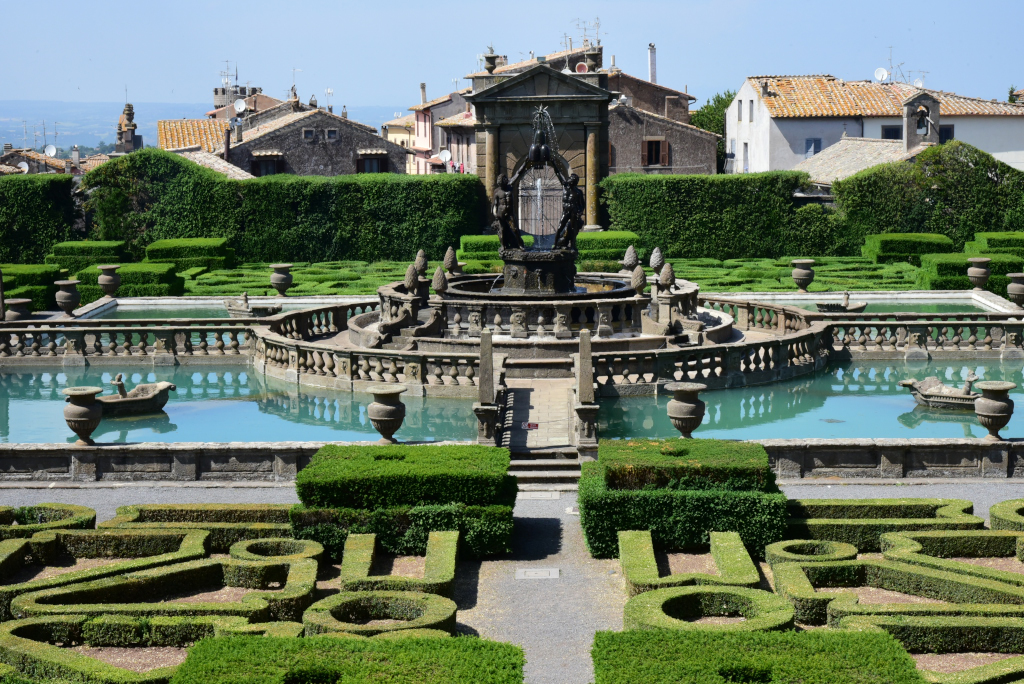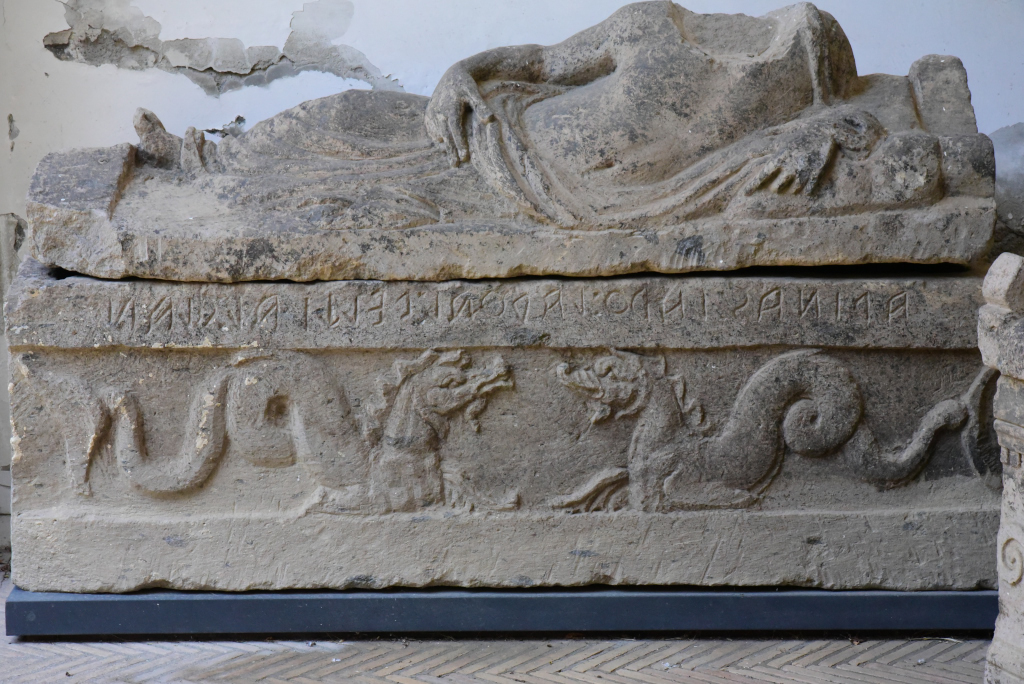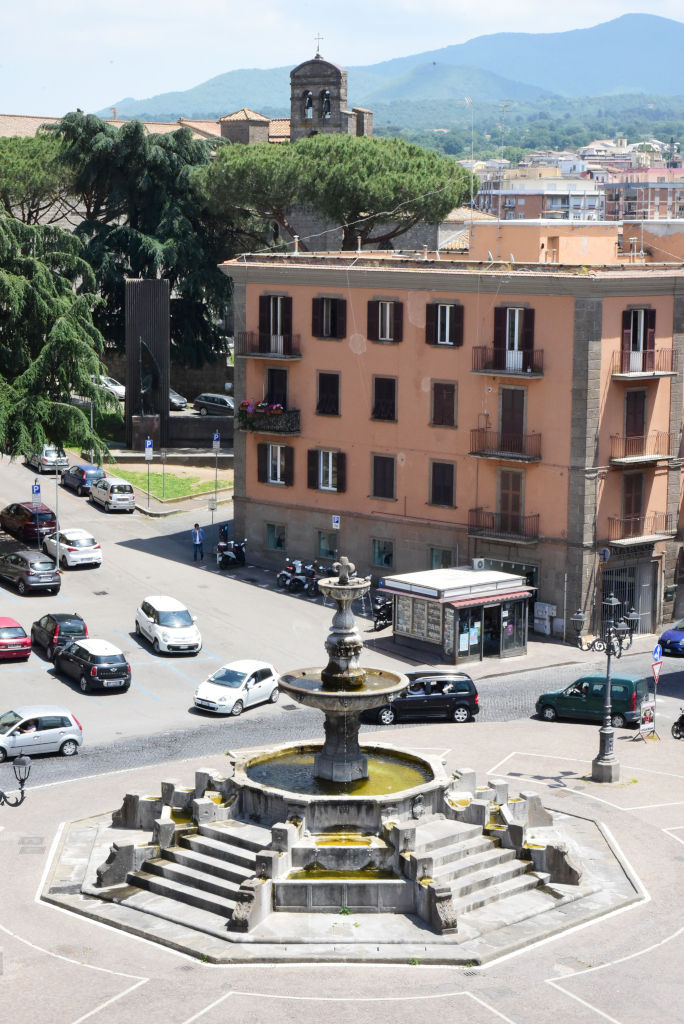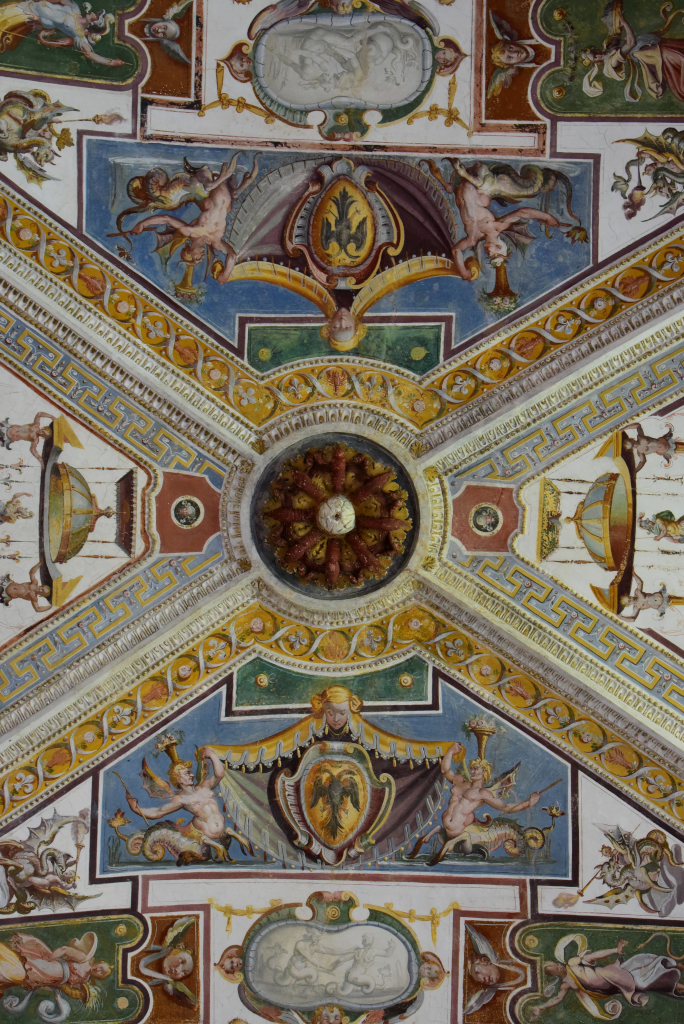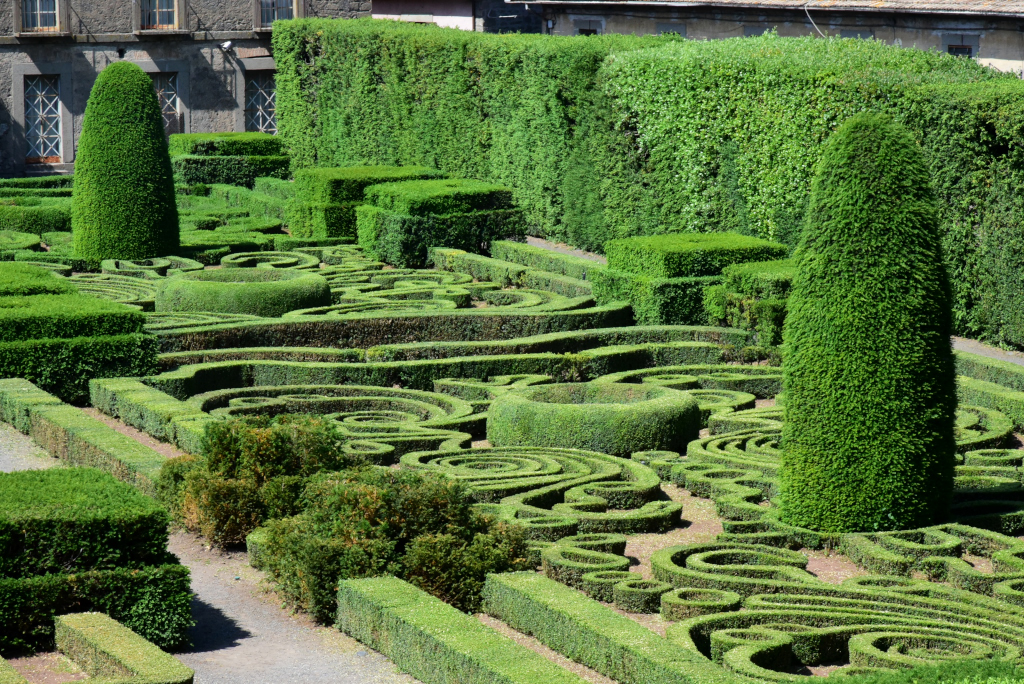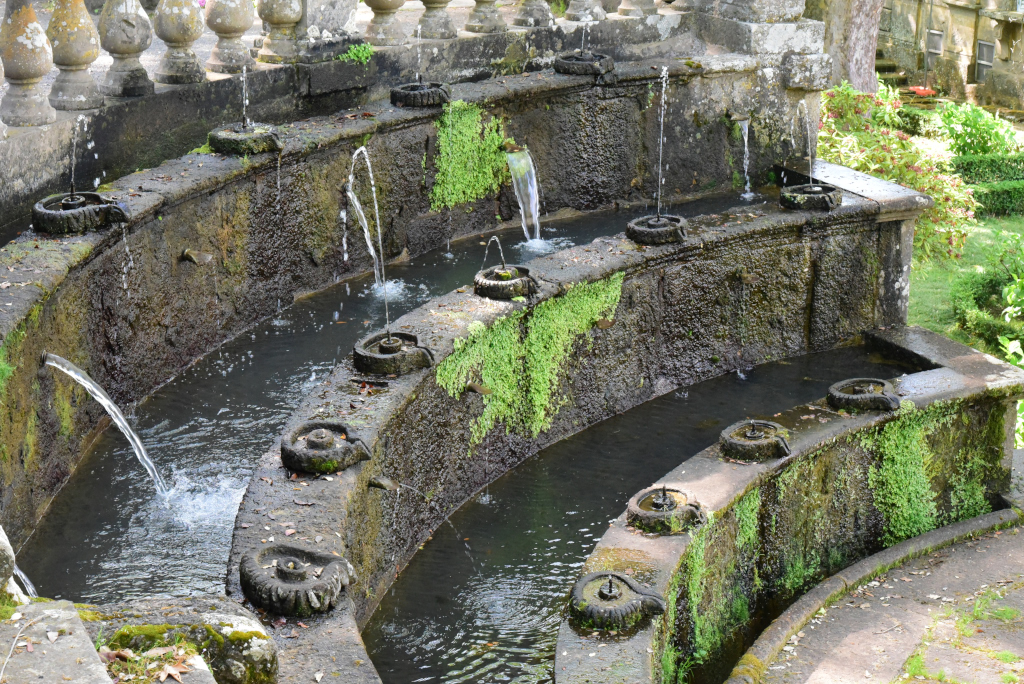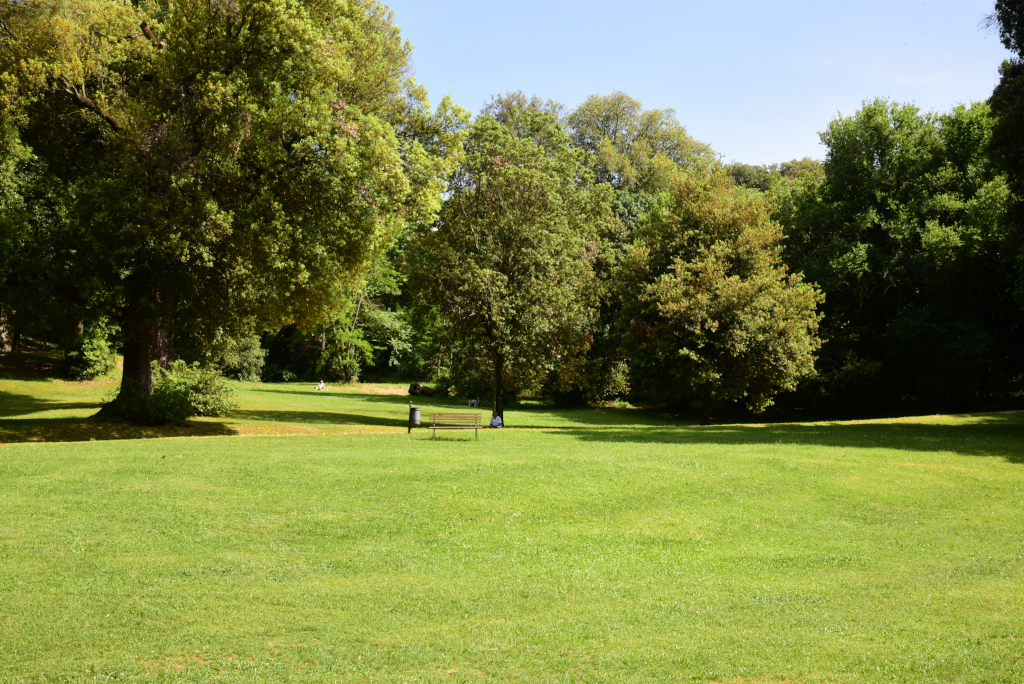May 31, 2018
The Museo Nazionale Etrusco Rocca Alborno is housed in a medieval palazzo within the city walls, and contains collections of artifacts of each of the major Etruscan archaeological sites in the region, including Tarquinia, Cerveteri, Tuscania, Vulci et al.
Prior to leaving town for the Villa Lante, a short walk around the piazza on which the Etruscan museum is housed.
Villa Lante at Bagnaia refers to a villa and its gardens designed in the 16th century in a Mannerist style in Bagnaia, a small town near Viterbo. The residence and its gardens were commissioned by wealthy cardinals who occupied the properties at the time.
The gardens of the Villa Lante feature cascades, fountains and dripping grottoes. Three sides the garden are enclosed by high box hedges, and in the centre, lower box hedges are crafted into decorative patterns around small fountains and sculptures, and focusing on a complex fountain at its centre.
The central fountain consists of four basins, separated by parapeted walks, the parapets decorated with stone pineapples and urns, and a statue of four men surrounding two lions, holding a symbolic mountain crowned with a star-shaped fountain jet with the coat of arms of the Montalto clan.
Above the main garden ascend several terraces. Lodged between two stone staircases on the first terrace is the Fontana dei Lumini, a circular tiered fountain. On the ledge of each tier are smaller fountains, imitating Roman oil lamps, spouting small jets of water which appear to blaze like lamp flames in the sunlight.
On the third terrace is a large and long stone table with a central channel with water flowing for the purpose of keeping wine cool. At the back of this terrace are sculpted river gods flanking a fountain. Directly above and supplying the water for the fountain is the catena d’acqua or chain of water, a water feature (gioco d’acqua) that can be seen in other 16th-century gardens.
On the next terrace are further fountains and grottos, and two small casini (houses) called Houses of the Muses, the sides of which frame the large Fountain of the Deluge that terminates the main axis of the garden. A roughened texture has been given to the sides of these small buildings to harmonize with the natural rough rock of the fountain, and water conduits set in their eaves project jets of water to complete a visual ensemble known as the ‘theatre of the waters’.
The town of Bagnaia is small, located in the immediate vicinity of Viterbo within medieval walls. It was first mentioned for its baths in the mid-10th century. In the 13th century the town came into the possession of the Bishop of Viterbo.
(narrative excerpted from Wikipedia)

